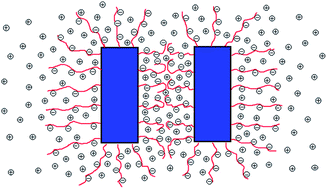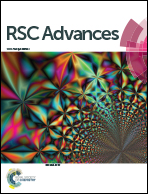A numerical study of two opposing polyelectrolyte brushes by the self-consistent field theory
Abstract
The self-consistent field theory (SCFT) is employed to numerically study the interaction and interpenetration between two opposing polyelectrolyte (PE) brushes formed by grafting PE chains onto the surfaces of two infinitely long and parallel columns with rectangular-shaped cross-sections immersed in a good solvent. The distribution of counter-ions and the dependence of the brush height on various system parameters are also examined. The numerical result reveals that the brush height scales linearly with the grafting density, the average degree of ionization of PE chains and the chain length. The numerical result suggests that, at a brush separation comparable to the brush height, the two opposing PE brushes shrink in order to avoid mutual interpenetration. The numerical study strongly indicates that the compression and retraction of PE brushes is more dominant than the mutual interpenetration for two apposing PE brushes. It is found that, except in the long chain length and/or small system volume limits, in a salt free solution, only about 50% of the counter-ions are trapped inside the PE brushes. Moreover, the relationship between the present two dimensional PE brushes and one dimensional planar PE brushes in terms of the percentage of the counter-ions trapped inside the PE brushes is discussed.


 Please wait while we load your content...
Please wait while we load your content...